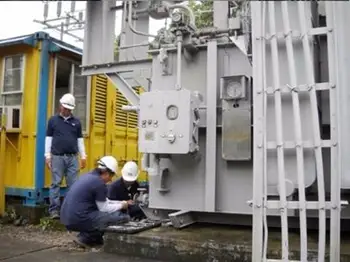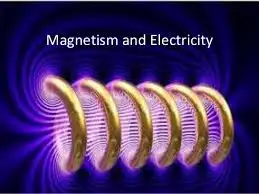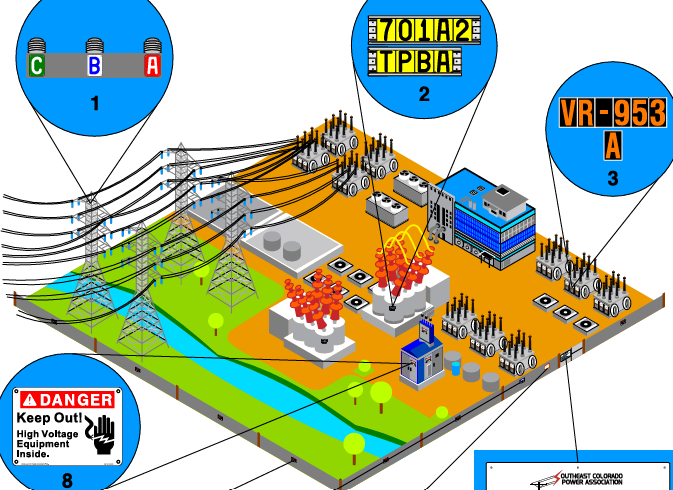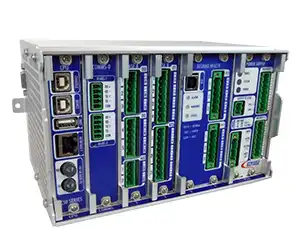Transformer Design Principles
Power Transformer Maintenance Training
Our customized live online or in‑person group training can be delivered to your staff at your location.

- Live Online
- 12 hours Instructor-led
- Group Training Available
Download Our OSHA 3873 Fact Sheet – Minimum Approach Distance and Training Requirements

- Calculate MAD using voltage and overvoltage values
- Ensure proper communication between host and contract employers
- Meet OSHA training requirements for qualified electrical workers
Transformer design ensures efficient voltage regulation, insulation, cooling, and magnetic flux control. By optimizing windings and core materials, engineers improve energy efficiency, reliability, and safety in electrical power systems.
What is Transformer Design?
Transformer design is a complex and critical aspect of electrical engineering that demands a deep understanding of various factors, including the magnetic core, winding configurations, voltage regulation, and cooling methods.
✅ Balances core materials, windings, and insulation
✅ Optimizes cooling systems and magnetic circuits
✅ Ensures energy efficiency, reliability, and compliance
By addressing these aspects and answering key questions, engineers can design devices that effectively transmit and distribute electrical power, ensuring the efficient operation of various systems and technologies. A solid grasp of design begins with understanding the broader utility transformers category, which covers applications from power distribution to industrial systems.
Electrical Transformer Maintenance Training
Substation Maintenance Training
Request a Free Training Quotation
Core Architectures and Materials
At the heart of thedesign is the magnetic core, which transfers energy between circuits through the phenomenon of electromagnetic induction. Cores can be shell-type or core-type. Shell-type designs enclose the windings, offering better leakage control, while core-type designs surround the core with windings, making them more economical and widely used in power applications. A detailed construction of transformer guide highlights how core, windings, and insulation come together in the design process.
Materials are equally important. Silicon steel laminations dominate traditional designs due to low core loss and high efficiency, while ferrites are preferred at high frequencies because of reduced eddy currents. Engineers also optimize stacking factor (lamination efficiency) and window space factor (copper fill) to balance performance and cost. The role of 3-phase transformers in balancing loads and ensuring stable power supply is central to effective design.
Test Your Knowledge About Utility Transformers!
Think you know Utility Transformers? Take our quick, interactive quiz and test your knowledge in minutes.
- Instantly see your results and score
- Identify strengths and areas for improvement
- Challenge yourself on real-world electrical topics
Core Types Comparison
| Core Type | Structure & Design | Advantages | Applications |
|---|---|---|---|
| Core-Type | Windings surround the core limbs | Economical, widely used, simple to build | Power and distribution transformers |
| Shell-Type | Core surrounds windings | Lower leakage flux, better short-circuit strength | Large power units, specialized designs |
Windings, Turns Ratio, and Voltage Regulation
Winding configurations define the input and output voltage levels. Copper is typically used due to its high conductivity and low resistance. The turns ratio directly determines voltage transformation, while the number of turns, conductor size, and arrangement influence efficiency and losses.
Losses fall into two categories: core losses (from magnetic hysteresis and eddy currents) and copper losses (from winding resistance). Careful balance of wire size, number of turns, and core design minimizes these losses. Typical transformer efficiencies can reach 97–99%, with voltage regulation generally in the ±1–5% range, depending on size and type.
When engineers calculate the cross-sectional area of the core, they must also carefully design the magnetic flux to achieve the correct magnetic flux density for efficient operation. Excessive flux density increases power losses and heating, thereby reducing the transformer's lifespan. The primary and secondary coil arrangement, including the number of turns in the primary winding and the primary and secondary windings as a whole, directly determines voltage transformation. Matching the primary voltage to the intended application ensures that the transformer delivers reliable performance across varying load conditions. In transmission systems, design engineers often compare distribution transformers with larger substation transformers to meet unique performance and installation requirements.
Cooling Methods
Efficient cooling prevents overheating, which can reduce lifespan or lead to failure. Methods range from natural air (AN) to forced air (AF), oil-immersed systems (ONAN/ONAF), and even forced circulation in large power units. Cooling design is tailored to match the load and environmental conditions, with performance evaluated against temperature rise standards.
Transformer Types and Installations
Transformers come in many types depending on the application:
-
Power transformers: used in transmission networks, designed for high efficiency and durability.
-
Distribution transformers: supply local loads, often pad-mount or pole-mount installations.
-
Step-up and step-down transformers: adjust voltage levels between generation and utilization.
-
Specialty designs: audio, pulse, and instrument transformers optimized for unique performance needs.
Pad-mount transformers serve neighborhoods and campuses, pole-mount transformers provide rural distribution, and substation transformers integrate with high-voltage systems.
Sizing and Nameplate Essentials
Proper sizing ensures performance and safety. Transformers are rated in kVA, calculated by:
kVA = (Volts × Amps) ÷ 1000
Nameplate data includes primary and secondary voltages, frequency (50 or 60 Hz), kVA rating, impedance, cooling class, and connection diagrams. These specifications help engineers match the transformer to the intended load and conditions.
Advanced Insulation Design
Insulation systems separate conductive parts, prevent breakdown, and protect against thermal stress. Materials may include resin, paper, or ceramic, chosen for dielectric strength and thermal endurance. Designers also account for the stacking factor and the window space factor to optimize copper fill, flux density, and mechanical clearances.
Environmental factors such as humidity, altitude, and pollution also influence insulation choices. Effective design also considers protective features, such as transformer insulation and transformer overcurrent protection, to enhance safety and reliability.
Tap-Changer Mechanisms
Voltage regulation is enhanced through tap changers, which adjust winding turns to maintain a stable output.
-
No-load tap changers (NLTCs): adjusted manually when de-energized.
-
On-load tap changers (OLTCs): adjust automatically under load, essential in transmission and industrial applications.
Tap changers enhance flexibility, efficiency, and resilience in response to fluctuating supply conditions.
Tap Changer Mechanisms
| Tap Changer Type | Adjustment Method | Advantages | Common Uses |
|---|---|---|---|
| NLTC (No-Load) | Manual, only when de-energized | Simple, lower cost | Distribution and fixed-load transformers |
| OLTC (On-Load) | Automatic, adjusts under load | Continuous regulation, high flexibility | Transmission and industrial systems |
Fire Safety Measures
High-voltage, oil-cooled transformers pose fire risks. Safety codes such as NFPA 850 require firewalls and barriers to limit damage in substations. Design measures may include fire-resistant fluids, containment pits, and protective spacing to minimize the risk of explosions and cascading failures.
FREE EF Electrical Training Catalog
Download our FREE Electrical Training Catalog and explore a full range of expert-led electrical training courses.

- Live online and in-person courses available
- Real-time instruction with Q&A from industry experts
- Flexible scheduling for your convenience
Transformer Design Standards
Standards from the IEEE, IEC, and ANSI provide guidelines for design methodologies, testing, and performance metrics. Routine factory tests include insulation resistance, winding resistance, and no-load/copper loss checks. Type tests, on the other hand, validate performance under short-circuit or lightning-impulse conditions.
Condition Monitoring and Maintenance
Modern transformers increasingly integrate condition monitoring systems. Sensors track parameters such as temperature, dissolved gas in oil, partial discharge, and load profiles. Predictive analytics help detect insulation breakdowns, overheating, or winding deformation before failure occurs. Combined with protective relays, these systems extend lifespan and reduce downtime.
A well-rounded design approach combines robust core and winding design, advanced insulation strategies, efficient cooling, and proper voltage regulation through tap changers. By following international standards, incorporating fire safety measures, and adopting real-time condition monitoring, engineers ensure that transformers operate at peak efficiency, reliability, and safety—serving applications ranging from household distribution to massive power networks. With modernization, advanced condition monitoring has become a vital design element, enabling predictive maintenance and extending the lifespan of transformers.
Related Articles







